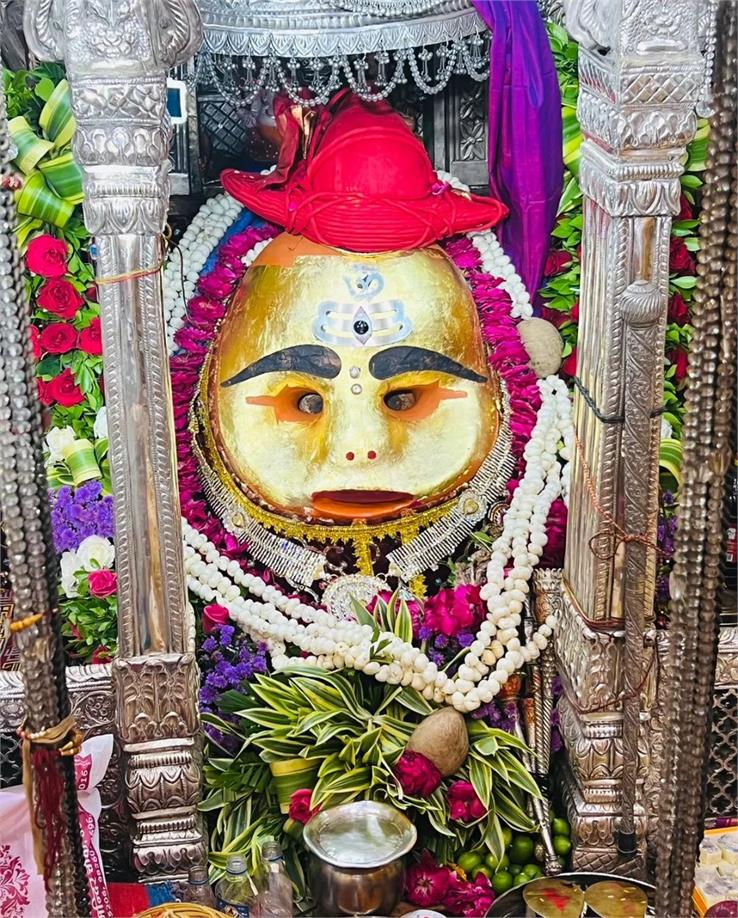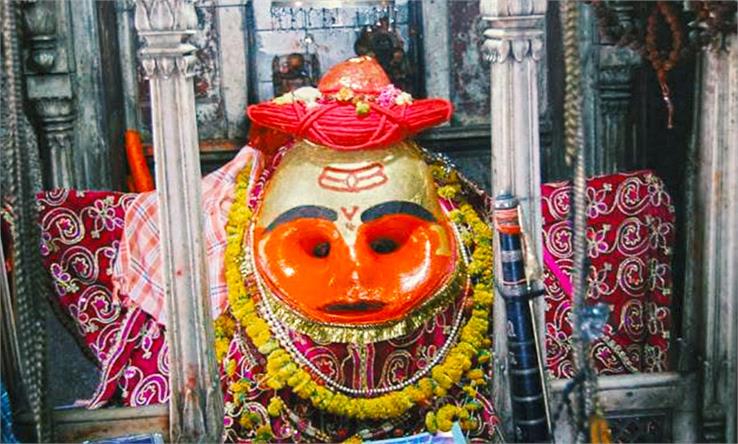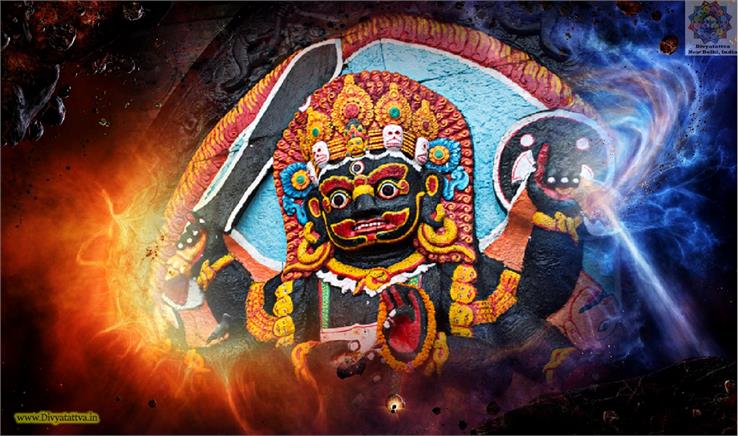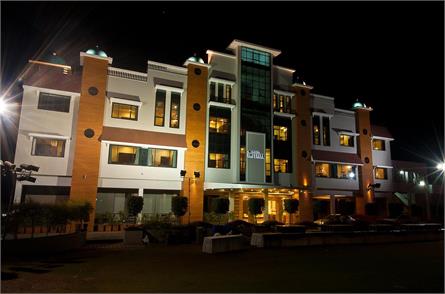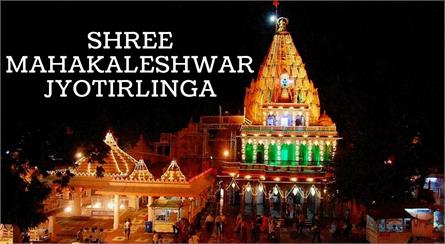Kaal Bhairav Ujjain Where Scientists Fail To Know The Secret
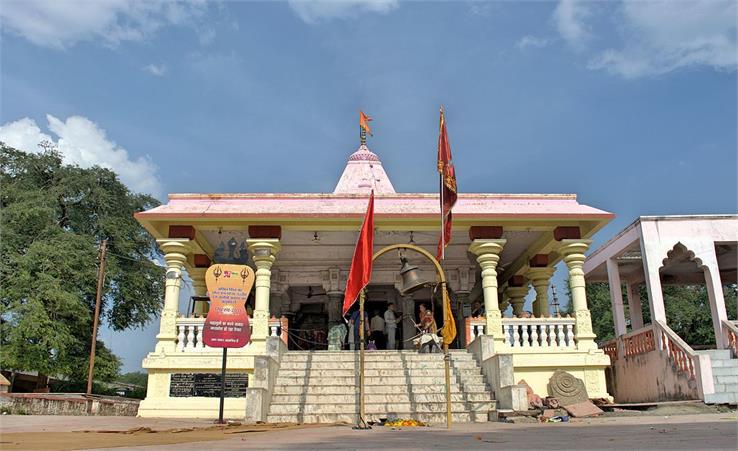
Such A Mysterious Temple Where The idol consumes the liquor, but no one knows where it goes! Let us know the exciting things and secrets of this particular temple.
In Hinduism, the idols of God have worshipped with heart and devotion. Many strange and beautiful temples exist in India where devotees express their love. One such mysterious temple is the Lord Kaal Bhairav temple in Ujjain, Madhya Pradesh. Here, devotees not only offer alcohol to God, but the idol of Lord Kaal Bhairav also accepts and consumes it. Ujjain, known as the city of Mahakal, is famous for its temples. Located on the banks of the Shipra River, the unique 6000-year-old Kaal Bhairav temple is about five kilometres from the temple of Mahakaleshwar. Surprisingly, this temple is in the middle of a Hindu cremation ground.
Also Read: Powerful Form of Lord Shiva In "Mahakaleshwar Jyotirlinga"
Kaal Bhairav Ujjain History
The Kaal Bhairav Temple in Ujjain has a history that spans several centuries and has intertwined with the rich cultural and religious heritage of the city. The temple is significant in Hindu mythology and has revered as a sacred site dedicated to Lord Bhairav, a fierce manifestation of Lord Shiva.
The exact origin of the Kaal Bhairav Temple is shrouded in the mists of time. However, historical records suggest that the temple was constructed during the time of the Maratha rulers in the 18th century. The Marathas patronized Hindu temples and played a crucial role in developing and restoring various religious sites in Ujjain.
The temple's architecture showcases a blend of Maratha and traditional Hindu styles. The structure has characterized by its intricate stone carvings and sculptures depicting various forms of Lord Bhairav. The temple's main deity is a stone idol of Lord Bhairav, with a dog by his side, symbolizing loyalty and vigilance.
Best Time To Visit Kaal Bhairav Ujjain
The temple holds immense significance during the holy month of Kartik (October-November), when devotees observe fasts, perform aarti (prayer ceremony), and participate in various religious activities. The atmosphere in and around the temple during this time is filled with a deep sense of devotion and reverence.
Over the centuries, the Kaal Bhairav Temple has stood as a symbol of faith, strength, and protection for its devotees. It continues to be an important pilgrimage site, offering a spiritual haven for those seeking solace, blessings, and liberation from the cycle of life and death.
The rich history and mythology associated with the Kaal Bhairav Temple make it an integral part of Ujjain's cultural fabric, attracting visitors intrigued by its mystical aura and seeking to connect with the divine.
Also Read: Avanti Shakti Peeth
Legend of Kaal Bhairav Temple
The legend behind the formation of the Kaal Bhairav Temple in Ujjain is steeped in Hindu mythology and revolves around the divine play of Lord Shiva and Lord Brahma. The story highlights the significance of humility, devotion, and the ultimate supremacy of Lord Shiva as Kaal Bhairav.
According to the legend, once there was a fierce battle of supremacy between Lord Brahma and Lord Vishnu. As the battle escalated, the two gods became engrossed in a heated argument, each claiming to be superior.
Witnessing the ego-driven clash between the two deities, Lord Shiva, the destroyer and supreme God, decided to intervene. In his divine wisdom, he manifested himself in the form of Kaal Bhairav to teach Lord Brahma a lesson and reinstate the importance of humility and devotion.
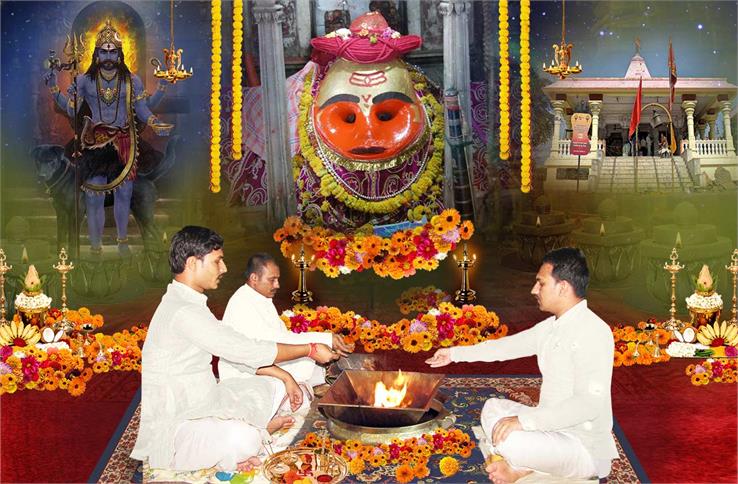
Lord Brahma commenced a grand yagna (sacred ritual) in Ujjain to establish his superiority and himself as the supreme deity. Sensing Lord Brahma's arrogance and the need for divine intervention, Lord Shiva took the form of Kaal Bhairav and arrived at the yagna site.
Disguised as a ferocious-looking black dog, Kaal Bhairav approached the yagna, intending to test Lord Brahma's steadfast devotion and humility. As per the legend, a dog is often associated with Lord Bhairav, symbolizing loyalty and vigilance.
Upon seeing the dog, Lord Brahma paid no heed and continued with the yagna, dismissing the presence of the mysterious creature. However, the black dog, who was none other than Kaal Bhairav, was persistent and sought Lord Brahma's attention.
In his arrogance, Lord Brahma ignored the dog for a second time, failing to recognize the divine presence of Lord Shiva. The black dog then revealed his proper form, transforming into the fierce and awe-inspiring Kaal Bhairav.
In retribution and to teach Lord Brahma a lesson, Kaal Bhairav swiftly severed one of Lord Brahma's five heads. This act symbolized the eradication of ego, pride, and arrogance, emphasizing the importance of humility before the divine.
Realizing his grave mistake and acknowledging Lord Bhairav's supremacy, Lord Brahma pleaded for forgiveness and sought redemption. Lord Shiva, pleased with Lord Brahma's repentance and realization, granted him forgiveness and salvation.
In a display of mercy and grace, Lord Shiva established the Kaal Bhairav Temple in Ujjain as a sacred place of worship, forever reminding devotees of the importance of humility, devotion, and surrendering the ego before the divine.
The Kaal Bhairav Temple, therefore, stands as a symbol of Lord Bhairav's power, protection, and the eternal lesson of humility. It attracts countless devotees who come to seek blessings, spiritual guidance, and liberation from opposing forces, embracing the teachings of Lord Shiva in his formidable form as Kaal Bhairav.
Famous Festival of Kaal Bhairav Ujjain
Bhairav Jayanti celebration
22 November
Mysteries Related To The Kaal Bhairav Ujjain
Kaal Bhairav temple in Ujjain, known as Bhairavgarh. Here, liquor is offered to Baba and sold outside the temple to provide during worship. According to belief, the Skandpuran describes this temple in the Avanti section, where Lord Kalabhairav worshipped in his Vaishnava form. When the wine offers to the idol, the vessel empties quickly, leaving a mystery of where the liquor goes. Many devotees come here to witness this scene and to seek Kaal Bhairav's blessings. While the offering of liquor is a part of the worship, it distributes as prasad. The purpose of offering liquor to Baba/ Kaal Bhairav is to renounce one's vices and bad habits. Liquor, or Sura, is a form of Shakti, a powerful energy.
Kaal Bhairav Wear a Special Turban
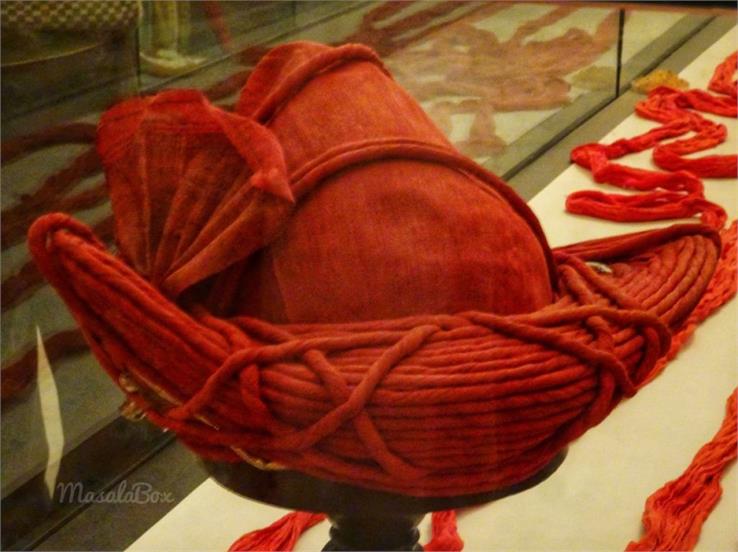
The Turban on Lord Kalbhairav's statue is said to have brought victory to the Scindia family during a time of great struggle. Legend has it that his Turban fell off when King Mahadji Scindia sought refuge with Lord Kalbhairav from his enemies. He then offered his Turban to Lord Kalbhairav and prayed for victory, which he eventually achieved after driving out all his enemies. Since then, Kaal Bhirav has worn Turban on behalf of the royal family of Gwalior, and it still holds great importance.
Mystery of Where The Liquor Goes
The temple of Baba Kaal Bhairav is shrouded in mystery and is considered miraculous by even scientists baffled by the phenomenon of God consuming alcohol. The temple, located about 8 kilometres from the city, is home to Lord Kalabhairav, who consumes approximately 2,000 bottles of liquor daily after the priest chants mantras. The liquor, referred to as Prasad, is believed to have healing powers and can cure various ailments. The temple is near Okhaleshwar Jagrat Shamshan on the banks of Maa Shipra river at a place named Bhairav Parvat, close to the Patal Bhairavi cave. Despite numerous attempts by archaeologists and scientists, the mystery surrounding the temple remains unsolved.
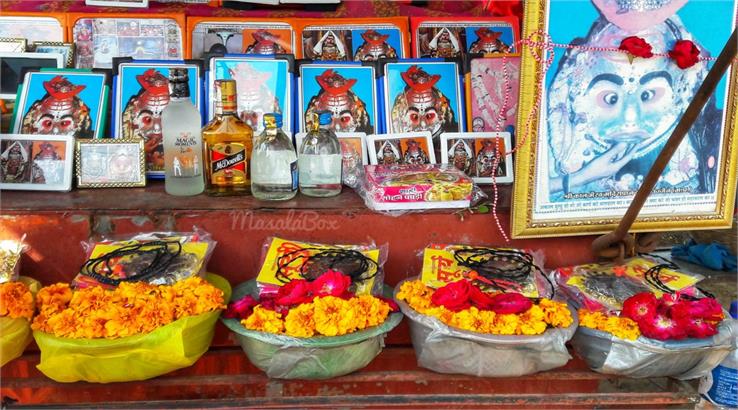
Interestingly, the temple also houses a counter of the Excise Department, where both men and women queue up to purchase liquor. Liquor of all kinds and brands is available outside the temple at all times, but only with permission from the administration. The shops nearby also openly sell liquor.
Bhairav Baba's temple has a unique way of worship that only the devotees there can participate in getting drunk on alcohol. They begin by sitting near the idol of Bhairav and reciting mantras, then offering a small cup of liquor to Baba's mouth. What's astonishing is that the entire cup gets emptied within two minutes, even though there are no visible openings in the idol's mouth. It's a mystery where the alcohol ends up.
What Happen During British Investigation?
During British rule, a British officer thoroughly investigated the temple of Bhairav Baba. The officer suspected that the alcohol offered during worship might go into the ground through this cave. As a result, they even excavated the areas around the statue up to the bottom, but they found nothing. Till today, it remains a mystery where the alcohol offered by Prasad is consumed.
Despite numerous investigations by various individuals, the mystery behind the consumption of alcohol offered during worship at the temple of Bhairav Baba remains unsolved. Some have proposed that the porous stone used to make the statue can absorb alcohol, but this theory has been disproven. Others have suggested that the alcohol evaporates into the atmosphere, but the speed at which the statue consumes the alcohol does not support this argument. Ultimately, it is believed that Lord Kaal Bhairav himself comes and drinks the alcohol, granting the wishes of his devotees, regardless of whether it is possible or not.


